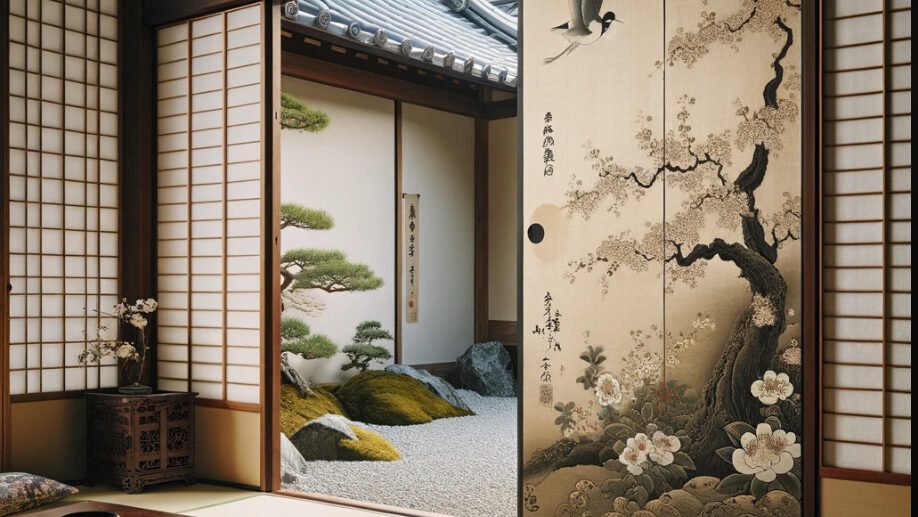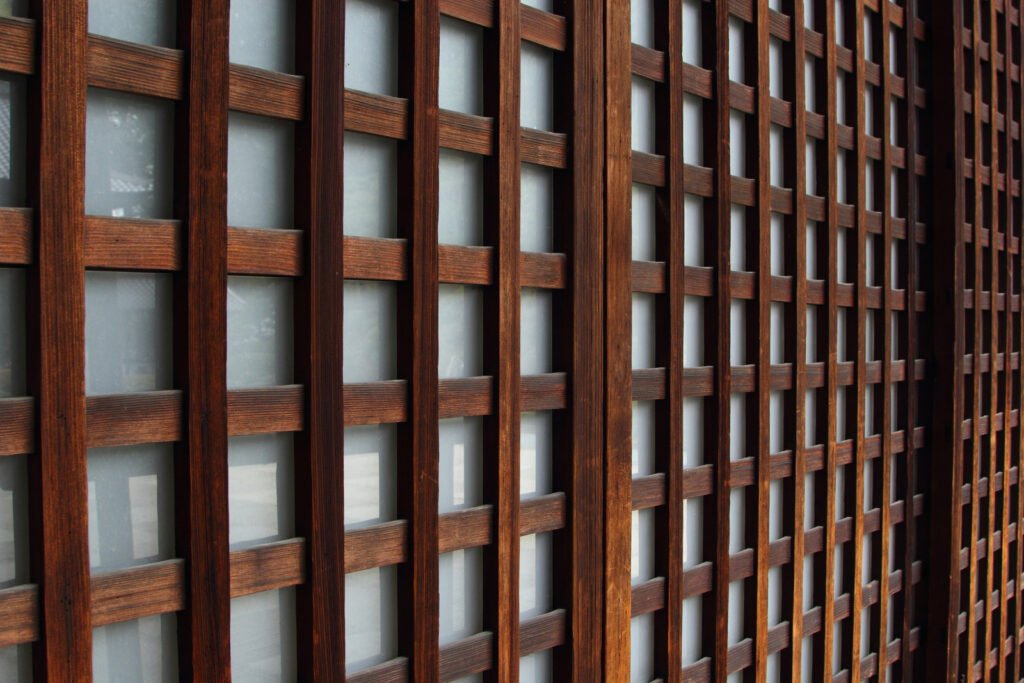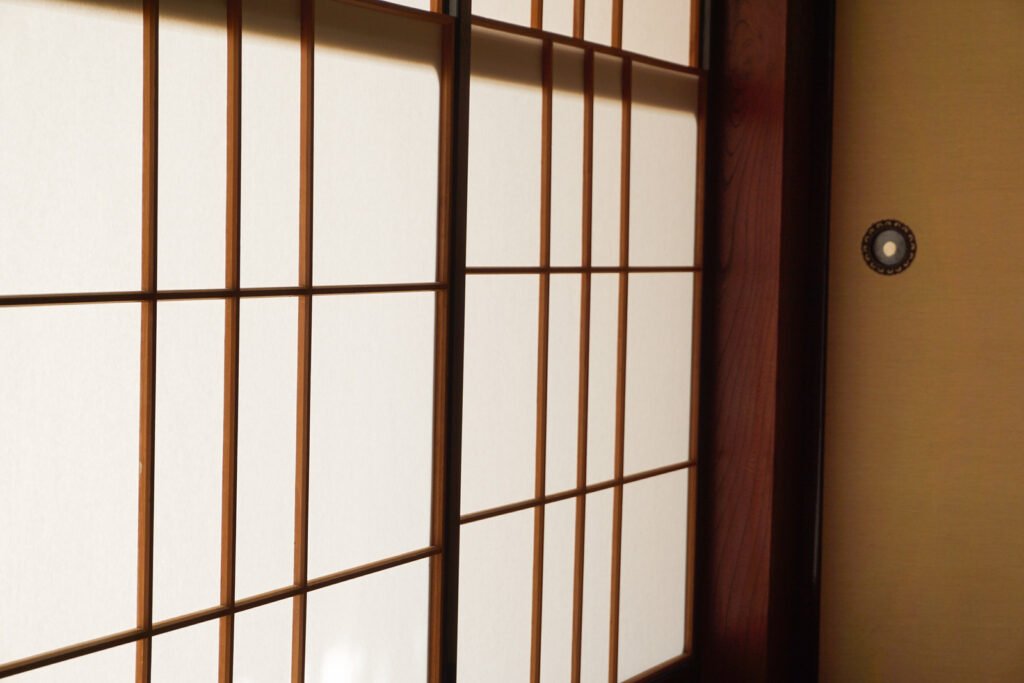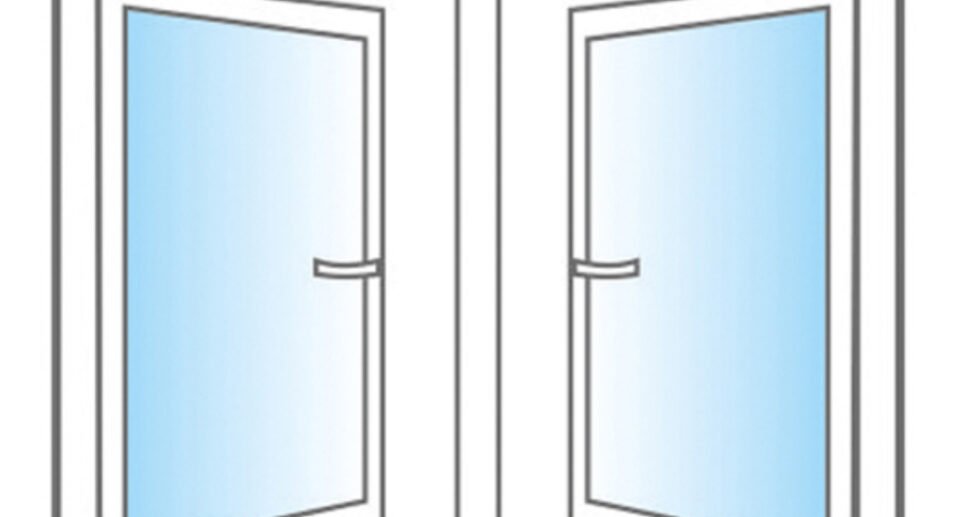What Are The Japanese Sliding Doors Called in Disney’s Sensational Shogun?

Table of Contents
ToggleThey’re called Fusuma (Japanese Sliding Doors). Fosuma is an important element of traditional Japanese architecture that has been in use for centuries. They are sliding panels that can be used to redefine spaces within a room, and they can also act as doors.
Millions of people are watching Disney’s Shogun intrigued by the traditions and architecture that seems like it’s in a different world. The main characters are “pillowing” away in the literally paper thin walls. At Door and Window Guide we think lot’s of people might want to know about the sliding doors. We know our stuff so read on for the details!
Fusuma is typically made of wood and paper, and they measure about 90 cm wide by 180 cm tall, which is the same size as a tatami mat. They are usually 2-3 cm thick.
Historically, fusuma was used to divide the interior of a Japanese house into smaller rooms for different purposes. For example, multiple bedrooms could be combined during the day to create a larger living room.
Fusuma is also used to provide privacy and to block out noise and light. They are often decorated with intricate designs and patterns, which can be seen from both sides of the panel.
Today, fusuma continues to be an important part of Japanese architecture and culture. They are used in traditional Japanese houses, as well as in modern living spaces.
In addition to their functional aspects, fusuma is also appreciated for their design and aesthetics, which reflect the unique cultural practices and technical details of Japanese architecture.
Key Takeaways
- Fusuma is a sliding panel used in traditional Japanese architecture to redefine spaces within a room and can act as doors.
- Historically, fusuma was used to divide the interior of a Japanese house into smaller rooms for different purposes.
- Today, fusuma continues to be an important part of Japanese architecture and culture, appreciated for their functional aspects, design, and aesthetics.
Historical Context

Origins and Development
Fusuma doors have a long history in traditional Japanese architecture. They were originally created as simple wooden frames covered with silk fabric, serving as room dividers.
The use of fusuma doors became more prevalent during the Heian period (794-1185), when the samurai class began to emerge and the need for privacy and separation of spaces increased.
Over time, the design of fusuma doors evolved to become more intricate and decorative, reflecting the creativity of Japanese artisans.
During the Momoyama period (1573-1603), fusuma doors became a popular means of displaying art and showcasing the wealth and status of their owners.
The doors were often adorned with paintings, calligraphy, and gold leaf, and were considered a form of high art.
Cultural Significance
Fusuma doors are not only a functional element of traditional Japanese architecture, but also hold cultural significance.
They are often used to create a sense of privacy and intimacy within a space, and to separate different areas of a home or temple.
The doors are also used as a canvas for artistic expression, with many famous artists and calligraphers creating works specifically for fusuma doors.
One notable example of fusuma doors in Japanese culture is at the Hongan-ji temple in Kyoto. The temple features a set of fusuma doors painted by the famous artist Kano Eitoku, which are considered to be some of the finest examples of Japanese art from the Momoyama period.
The evolution of design in fusuma doors is a testament to the creativity and skill of Japanese artisans, and their ability to fuse functionality with beauty in traditional Japanese architecture.
Design and Aesthetics
Fusuma are not only functional but also serve as an important element of Japanese interior design.
Materials and Construction
Fusuma are traditionally made of wood, paper, and cloth. The paper used in fusuma is called washi, which is a type of Japanese paper made from the fibers of the mulberry tree.
The wood used in fusuma is usually Japanese cedar or cypress. The cloth used in fusuma is usually silk.
The combination of these materials creates a beautiful and durable sliding door that is both functional and visually appealing.
Artistic Elements
Fusuma are often decorated with paintings or calligraphy, known as fusuma-e, which adds an element of art to the sliding doors.
The paintings are usually done on karakami, a type of Japanese paper that is thicker and stronger than regular paper.
The paintings are done in a variety of colors, with vermilion being a popular choice.
The artistic elements of fusuma are an important part of Japanese interior design and add a touch of elegance to any space.
Color and Patterns
The colors and patterns used in fusuma are carefully chosen to complement the overall design of the space.
The colors used in fusuma are usually muted, with earthy tones being a popular choice.
The patterns used in fusuma are often simple, with geometric shapes being a common theme.
The use of color and patterns in fusuma is an important aspect of Japanese interior design and helps to create a harmonious and balanced space.
Functional Aspects

Fusuma is a traditional sliding door that serves both functional and aesthetic purposes in Japanese architecture. The doors are made of a wooden frame covered on both sides with heavy paper or fabric. They are fitted with a frame of lacquered wood around the outer edges of the panel, which makes them durable and long-lasting.
Space Utilization
Fusuma is an excellent way to maximize space utilization in Japanese-style rooms, also known as washitsu.
These rooms are designed to be flexible and multifunctional, and fusuma doors allow for easy partitioning of the space.
By sliding the doors open or closed, the occupants can create different configurations of the room to suit their needs.
Privacy and Separation
Fusuma doors are also an effective way to provide privacy and separation between different areas of the house.
They can be used to partition off sleeping areas or to create a private workspace.
The opaque panels of the fusuma doors provide visual privacy, while the sliding mechanism allows for easy access and movement between the different areas.
Fusuma in Modern Living
Fusuma, the traditional Japanese sliding panels, have been an integral part of Japanese architecture for centuries. They are still widely used in modern living, especially in Japanese-style rooms. In this section, we will explore the contemporary use of fusuma in interior design, maintenance, and customization.
Contemporary Use
Fusuma doors are now being creatively utilized in contemporary interior design to seamlessly blend traditional Japanese aesthetics with a sleek and innovative flair.
For example, modern Japanese apartments often have one room with a traditional tatami floor and fusuma doors. This creates a perfect balance between modern and traditional styles, giving the space a unique and elegant look.
Fusuma doors also provide an excellent way to update the properties of a home. They can be used to partition spaces while adding a touch of elegance, creating a sense of privacy and intimacy.
They offer a versatile and practical solution for modern living, especially in open-plan homes.
Maintenance and Customization
Fusuma doors are made with traditional techniques, using wood and paper or cloth, and mounted on wooden rails. They require regular maintenance to keep them in good condition.
Cleaning the paper or cloth panels with a soft cloth and avoiding direct sunlight will help maintain their appearance.
Customization is also possible with fusuma doors. They can be painted or decorated with traditional Japanese motifs or modern designs.
This allows homeowners to personalize their living spaces and create a unique look that reflects their style and personality.
Cultural Practices
Fusuma has been an essential part of Japanese culture and tradition for centuries. These sliding doors have served multiple purposes, including practical, aesthetic, spiritual, and symbolic roles. In this section, we will explore some of the cultural practices that have been associated with Fusuma.
Tea Ceremony and Interior Decor
Tea ceremony, or Chado, is a Japanese cultural activity that involves the ceremonial preparation and presentation of matcha, powdered green tea.
The tea ceremony is usually held in a special room called Chashitsu, which is decorated with traditional Japanese elements, including Fusuma.
Fusuma plays an essential role in the tea ceremony, as it helps to create a peaceful and serene atmosphere in the Chashitsu.
The doors are often decorated with simple yet elegant designs that complement the overall aesthetic of the room.
The use of Fusuma in the tea ceremony highlights the importance of interior decor in Japanese culture.
Spiritual and Symbolic Roles
Fusuma has also played an essential role in Japanese spirituality and symbolism.
In traditional Japanese houses, Fusuma was used to divide the living spaces, creating separate rooms for different purposes.
The doors were often made of paper or silk and decorated with intricate designs that symbolized various aspects of Japanese culture and history.
The use of Fusuma in Japanese houses also had spiritual significance. The doors were believed to create a barrier between the physical and spiritual worlds, protecting the inhabitants from evil spirits and negative energy.
The doors were often made of natural materials, such as wood and paper, which were believed to have spiritual properties.
Technical Details
Installation and Mechanics
Fusuma, also known as sliding doors, are an essential part of traditional Japanese houses. They are vertical rectangular panels that can slide from side to side to redefine spaces within a room or act as doors.
Fusuma are typically made of wood and paper or cloth and mounted on wooden rails.
The rail is traditionally nothing more than a wooden track that is waxed. The panels are about 90 cm wide by 180 cm tall, the same size as a tatami mat, and are 2-3 cm thick.
Fusuma are installed in wooden frames, and the tracks are installed on the top and bottom of the frame.
The top track is usually hidden by a wooden board known as a ranma. The bottom track is typically a simple wooden stick that runs along the floor.
The panels are suspended from the top track and slide along the bottom track.
Variations and Innovations
There are many variations and innovations in the design of fusuma.
One of the most common variations is the use of shōji, which are transparent sliding panels that are used to separate the exterior and interior of the house.
Shikii is another variation that is used to create large spaces by removing the panels altogether. The canvas is also sometimes used instead of paper or cloth to create more durable panels.
Fusuma can be designed to slide in different directions, depending on the needs of the space.
Some versions of fusuma can be designed to slide in two directions, which allows for more flexibility in the layout of the room.
The interval between the panels can also be adjusted to create different levels of separation between spaces.
Frequently Asked Questions
Fusuma doors are used as interior walls and doors in traditional Japanese architecture. They are designed to slide along wooden tracks and can be used to divide a room into smaller spaces or to create a sense of privacy.
They are commonly used in tatami rooms, which are traditional Japanese rooms that are covered in tatami mats.
Fusuma doors are made from wooden frames that are covered in paper or cloth. They are opaque and can be used to create a sense of privacy.
Shoji, on the other hand, are made from wooden frames that are covered in translucent paper or fabric. They are used to allow light to pass through while still maintaining a sense of privacy.
Fusuma doors are often decorated with intricate designs. These designs are meant to symbolize various aspects of Japanese culture.
For example, they may feature images of nature, such as cherry blossoms or bamboo, which are important symbols in Japanese culture. They may also feature images of animals, such as cranes or turtles, which are considered to be symbols of longevity and good luck.
Traditionally, fusuma doors were made from wooden frames that were covered in paper or cloth. The paper or cloth was often decorated with intricate designs or patterns.
Today, modern materials such as plastic or acrylic may be used in place of traditional materials.
The design of fusuma doors reflects many of the aesthetic principles that are important in Japanese culture. For example, they often feature simple, clean lines and a minimalist design.
They may also incorporate natural materials, such as wood or paper, and feature natural motifs, such as flowers or birds.
Fusuma doors require regular cleaning to prevent dirt and dust from accumulating on the paper or cloth covering. They should be wiped down with a soft cloth or brush and a mild cleaning solution.
It is also important to avoid exposing them to direct sunlight. This can cause the paper or cloth to fade over time.

Hello, I’m Keith Jones. I’m the author and head of content here of door and window guide. I’ve been in the window and door industry for over 10 years in the UK and North America. I’ve had quite a few roles during my career mainly in Worldwide sales. I’m now semi retired so I thought I’d put my knowledge to good use educating people about all they might need to know about door and window related topics.






